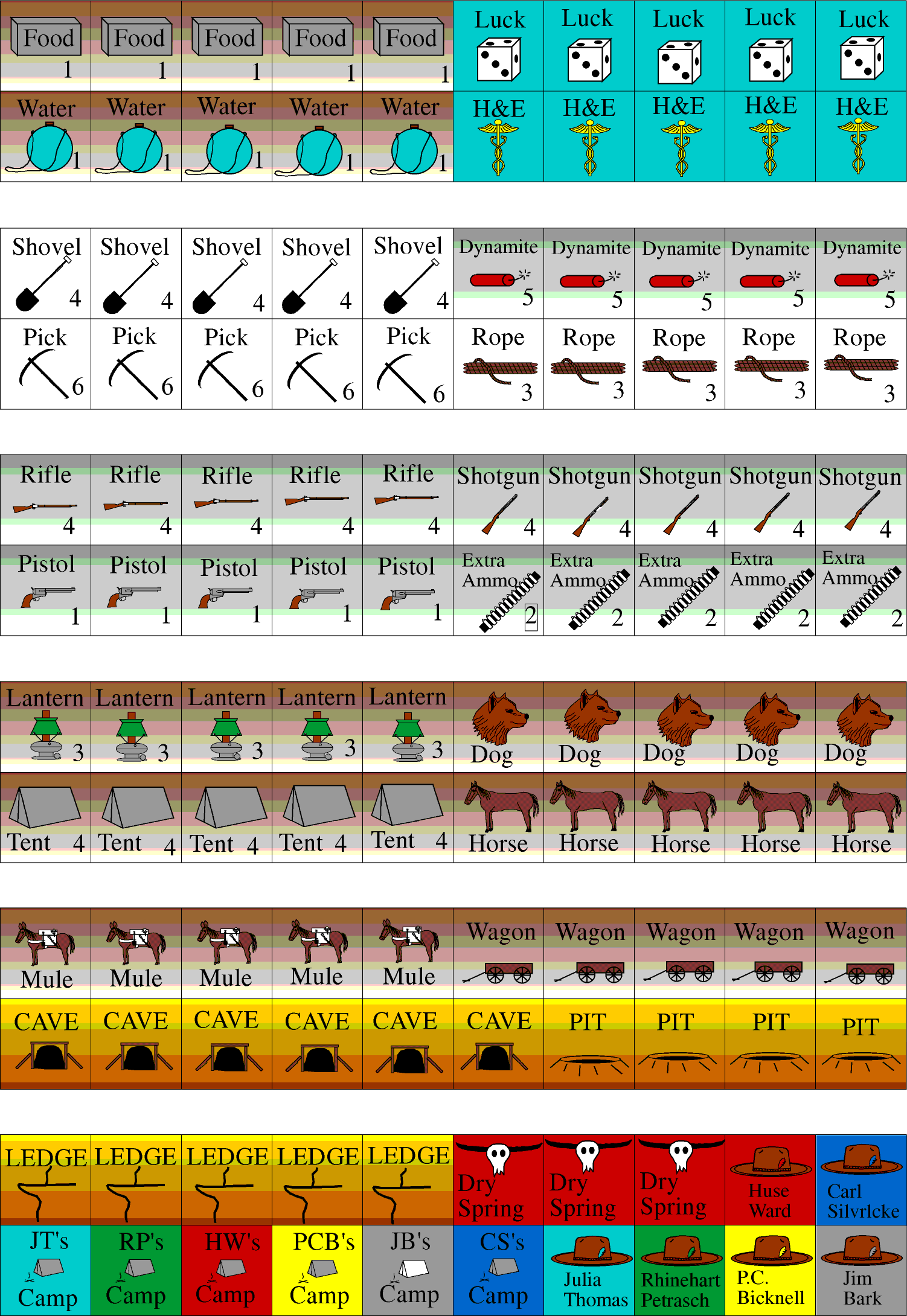|
|
|
|
Legend of the Lost Dutchman A game of the 1890's Arizona Territory, where 2-5 players compete to discover the legendary Lost Dutchman gold mine. Players must outfit their expedition and search through the most rugged terrain imaginable, while avoiding rattlesnakes, thirst, extreme heat, bandits, Apache guards, and other player's greed. One 11 by 17 inch parchment map of the Superstition Mountains, 180 color counters, 108 Event and Search cards, complete rules, player character sheets, and a nugget of genuine Fool's Gold. Find the treasure of Jacob Waltz, or die trying. $12.00
|
|

|

|
|
|
|
|
Historical notes (from the rulesbook) Having been born and raised in Arizona, I heard the stories of the Lost Dutchman Mine at an early age. The basic story is well known, and can be summarized as follows:
Jacob Waltz was a miner/prospector from Wurttemberg, Germany. He wandered into the Arizona Territory around 1862 and prospected several areas. He supposedly located a fabulous treasure while searching in the Superstition Mountains, located approximately 35 miles southeast of Phoenix. He became quite ill in his later life, and on his deathbed related the story of the treasure to his caretaker, one Julia Thomas. She and others spent years combing the Superstitions, looking in vain for the treasure. Tales of the expeditions can be found in local newspapers from the 1890's and later. Exactly what was the treasure of the Dutchman (who was really German)? Favored theories include Aztec gold, Spanish loot, Apache massacre (Peralta Family) gold, and the more conventional mine shaft covered over with boulders. Over the years many people have died "mysterious" deaths while searching the Superstitions. The "official" count stands somewhere between 25 and 35 bodies, depending on who is counting. The deaths are attributed to many causes, including dehydration, rock slides, random gunfire, wild animals, and the more exotic explanations, like Apache guards and supernatural phenomena. Several of the deaths in the 1920's and 1930's were investigated by local authorities with little success. In 1984 the Superstition Mountains were designated as wilderness area by the Federal government. Hiking is allowed, but mining, digging and blasting are prohibited. A very nice topographic is available at the ranger station and shows the major trails and water holes. It is unlikely that the mystery of the Lost Dutchman will ever be solved. Most tales related by treasure hunters forget two important facts: the 1887 earthquake with its epicenter somewhere near the Superstition Mountains (that could have collapsed any existing mine shafts) and the 1891 flood (that covered much of the Salt River valley including Phoenix itself). Map notes: The map is based primarily on the USGS 7.5 minute topographic maps of the area and the US Forest Service map of the Superstition Wilderness Area. Additional details were filled in from sketch maps in the secondary sources. Several things should be noted. Several "popular" names were used in place of the official ones. For example, Charley Boys Trail is actually labeled Charlebois Trail on most maps, but no self-respecting Arizonan would ever pronounce anything French, especially in the 1890's (several sources confirmed this common pronunciation). Skeleton Ridge and the Spanish Graveyard do not appear on any maps, but there are sources confirming their location (Blair's book has a nice photo). The true location of Skull Cave is much further to the north (nearer the Salt River), but is placed where other caves are found so it could be on the map. I can guarantee that the map is as accurate as any you will find in any souvenir stand or curio shop in Apache Junction. It is many times more accurate than any map possessed by any prospector or treasure hunter in the 1890's. Historical notes, counter art, and map art are ©1995 Randy Moorehead |
|
|
|
|